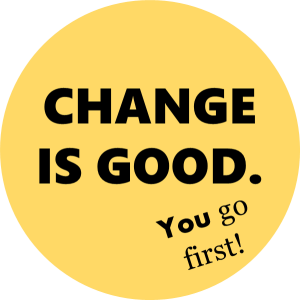 As a new vice president of customer service in a FORTUNE 500 company, I was astounded that our customer service associates were using an outdated word document system as a reference guide to assist customers. When it was first introduced 20 years ago, it was probably better than sliced bread. Associates could search word documents for help versus having to look up things in a manual. But 20 years later, technology had a better answer. We introduced a web based knowledge management system with search capability and content structure that made looking up information a zillion times faster. Fortunately we engaged an experienced change management consultant to help us introduce the new system to employees through learning workshops, hands on demonstrations, and assuring their input was incorporated into a new product. But employees were still worried about the new process and there was still a bit of resistance to the change. It made no sense to me. The new process and software was a hundred times better, faster and user friendly. How could anyone not want to have it? But this is the reality of change. People tend to cling to things that are familiar to them no matter how wonderful the new way of doing things may be. It doesn’t make sense but then it doesn’t need to because it’s emotional. Fortunately the change management activities we implemented along the way were effective and the implementation of the new process went well. A year later, there wasn’t an associate that could imagine themselves going back to the old way of doing things.
As a new vice president of customer service in a FORTUNE 500 company, I was astounded that our customer service associates were using an outdated word document system as a reference guide to assist customers. When it was first introduced 20 years ago, it was probably better than sliced bread. Associates could search word documents for help versus having to look up things in a manual. But 20 years later, technology had a better answer. We introduced a web based knowledge management system with search capability and content structure that made looking up information a zillion times faster. Fortunately we engaged an experienced change management consultant to help us introduce the new system to employees through learning workshops, hands on demonstrations, and assuring their input was incorporated into a new product. But employees were still worried about the new process and there was still a bit of resistance to the change. It made no sense to me. The new process and software was a hundred times better, faster and user friendly. How could anyone not want to have it? But this is the reality of change. People tend to cling to things that are familiar to them no matter how wonderful the new way of doing things may be. It doesn’t make sense but then it doesn’t need to because it’s emotional. Fortunately the change management activities we implemented along the way were effective and the implementation of the new process went well. A year later, there wasn’t an associate that could imagine themselves going back to the old way of doing things.
The lesson here is that no matter how great the new way of doing business is, don’t be surprised when people resist it. Make sure your change management process addresses the emotional side of change because people need to let go of old ways before they can implement the new.
